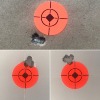coloradokevin
Member
- Joined
- Mar 22, 2008
- Messages
- 3,285
Have any of you built a precision bolt action rifle at home? I've built quite a few AR-15's, but that platform tends to be ideal for the home builder. Bolt guns have always seemed to be another matter.
I'm currently picturing a gun I'd like to build, but I don't know how easy it would be to pull this off. In essence, I'd like to setup a .300 PRC or .300 RUM in a way that would allow it to function as a hunting rifle, while still filling a role as a reliable precision rifle... that's always a tough balance since hunting rifles tend to be light and nimble, and precision rifles tend to be heavier. I kind of want to strike a balance between the two.
I've thought about doing something like a Proof Research carbon fiber wrapped barrel, running my existing suppressor for noise and recoil control, and then putting that setup into a precision action and stock.
Anyway, the long and short of it is that I don't know how practical it would be to do something like this at home. I've heard of the RemAge conversions, I've heard of short chambering, and I've wondered about other practical ways to make this happen. I do not have a lathe at home, so any kind of gunsmithing work that would require such a device would put this beyond my capabilities at the moment. It also seems that stuff for magnum length actions is less supported for the home builder, but that could be a misconception on my part.
Basically, I was just wondering if anyone has built a bolt gun themselves, and what they thought of the process? Any tips on the best way to go about achieving these results at home? If it isn't practical I may go another route, but I do like building stuff myself, particularly when I'm picturing a setup I haven't seen for sale anywhere.
I'm currently picturing a gun I'd like to build, but I don't know how easy it would be to pull this off. In essence, I'd like to setup a .300 PRC or .300 RUM in a way that would allow it to function as a hunting rifle, while still filling a role as a reliable precision rifle... that's always a tough balance since hunting rifles tend to be light and nimble, and precision rifles tend to be heavier. I kind of want to strike a balance between the two.
I've thought about doing something like a Proof Research carbon fiber wrapped barrel, running my existing suppressor for noise and recoil control, and then putting that setup into a precision action and stock.
Anyway, the long and short of it is that I don't know how practical it would be to do something like this at home. I've heard of the RemAge conversions, I've heard of short chambering, and I've wondered about other practical ways to make this happen. I do not have a lathe at home, so any kind of gunsmithing work that would require such a device would put this beyond my capabilities at the moment. It also seems that stuff for magnum length actions is less supported for the home builder, but that could be a misconception on my part.
Basically, I was just wondering if anyone has built a bolt gun themselves, and what they thought of the process? Any tips on the best way to go about achieving these results at home? If it isn't practical I may go another route, but I do like building stuff myself, particularly when I'm picturing a setup I haven't seen for sale anywhere.



